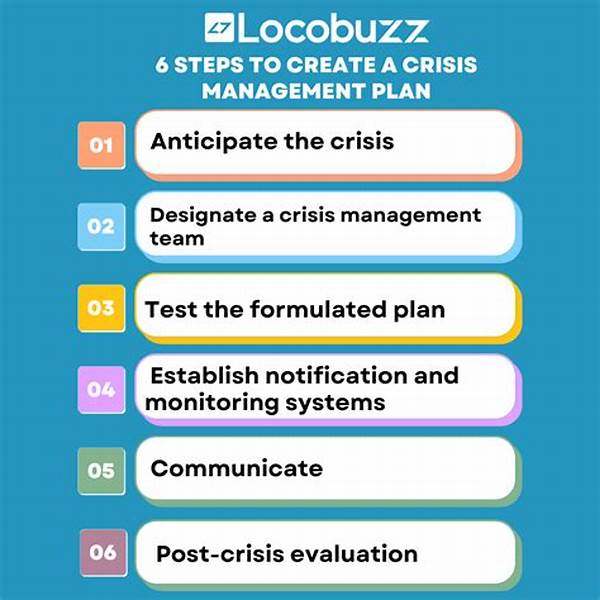In an increasingly complex and interconnected world, organizations face a myriad of potential crises, ranging from natural disasters to cyber threats. It is imperative for institutions to establish robust frameworks for crisis management and response planning, ensuring the ability to swiftly navigate and mitigate adverse situations. These plans not only safeguard the operational continuity of an entity but also protect reputational integrity and stakeholder confidence. As we delve deeper into this critical subject, it becomes evident that a structured approach to crisis management and response planning significantly enhances an organization’s ability to withstand and recover from unforeseen events.
Importance of Crisis Management and Response Planning
Crisis management and response planning are foundational components of a comprehensive risk management strategy. These processes involve the identification of potential crises, assessment of their impact, and development of appropriate strategies to address them. A well-designed plan is proactive, outlining clear roles and responsibilities, communication channels, and decision-making protocols. It is crucial that these plans are tested regularly through simulations and drills to ensure efficacy and organizational readiness.
Moreover, crisis management and response planning extend beyond immediate reactions. They encompass long-term recovery efforts, emphasizing resilience and adaptability. Institutions that prioritize these practices are better positioned to minimize the detrimental effects of crises, ensuring business continuity and safeguarding their reputation. In essence, effective crisis management and response planning is not a mere operational necessity but a strategic imperative in today’s volatile environment.
Key Elements of Crisis Management and Response Planning
1. Risk Assessment and Identification: Critical to crisis management and response planning is identifying potential threats and evaluating their likelihood and impact. This informs the development of targeted strategies.
2. Communication Plans: Establishing clear communication channels is vital. This ensures that accurate and timely information is disseminated during a crisis, thereby maintaining stakeholder trust.
3. Role Definition and Resource Allocation: Clearly defined roles and a structured allocation of resources enable swift and coordinated responses during a crisis event.
4. Training and Simulations: Regular training and crisis simulations are essential to ensure staff preparedness. This enhances judgment and decision-making capabilities in real-world scenarios.
5. Post-Crisis Evaluation and Recovery: Following a crisis, an evaluation is crucial. It provides insights for improving future plans and is an integral part of effective crisis management and response planning.
Developing a Comprehensive Crisis Management Plan
Establishing a comprehensive crisis management and response plan requires meticulous attention to detail and strategic foresight. In its formulation, stakeholders from across the organization should be involved to ensure diverse perspectives and the incorporation of all possible scenarios. This inclusive approach heightens the preparedness of the organization, improving its overall resilience.
An effective crisis management and response planning process also requires continuous refinement and alignment with evolving risks. This dynamic nature ensures that the plans remain relevant and applicable in the face of new challenges. Regularly updated plans are indicative of an agile organization, one that can pivot and respond judiciously to crises while minimizing disruption and maintaining stakeholder confidence.
Best Practices in Crisis Management and Response Planning
1. Scenario Planning: Developing multiple scenarios based on potential crisis situations helps organizations anticipate and plan for various outcomes.
2. Leadership Accountability: Strong leadership is pivotal. Leaders should be accountable and responsive, guiding the organization through turbulent times with clarity and decisiveness.
3. Technological Integration: Leveraging technology in crisis management enhances data analysis and decision-making, providing real-time insights critical for effective responses.
4. Stakeholder Collaboration: Engaging with stakeholders, including suppliers and partners, ensures a coordinated response effort, aligning resources and communication.
5. Cultural Awareness: Understanding cultural nuances is essential, particularly for multinationals, to tailor crisis communication and responses appropriately.
6. Regular Audits: Conducting regular audits of the crisis management and response planning ensures alignment with current best practices and compliance standards.
7. Crisis Monitoring Systems: Implementing systems to monitor and detect early signs of potential crises can provide a valuable lead-time for preparatory actions.
8. Cross-Departmental Synergy: Encouraging a collaborative approach across departments enhances the overall effectiveness and speed of crisis response efforts.
9. Crisis Communication Team: Establishing a dedicated team to manage communications ensures tailored and coherent messaging to various audiences.
10. Continuous Learning: Organizations should foster a culture of learning from past crises to improve and adapt their response strategies continually.
Challenges in Crisis Management and Response Planning
Despite the critical importance of crisis management and response planning, organizations often encounter several challenges in their implementation. Limited resources and competing priorities can hinder the development and execution of comprehensive plans. Additionally, the unpredictable nature of crises necessitates flexibility and adaptability, which some organizations may find difficult to institutionalize.
Internal resistance to change can further complicate efforts, as can cultural barriers within global operations that present hurdles in unified response strategies. To overcome these challenges, leadership’s commitment is indispensable. Champions of crisis management and response planning must foster an organizational culture that values preparation and continuous improvement, ensuring that the organization remains resilient in the face of adversity.
Summary
In conclusion, crisis management and response planning are not merely optional aspects of organizational strategy but are fundamental to maintaining stability and ensuring continuity in an unpredictable world. By integrating comprehensive risk assessment, proactive planning, and continuous refinement, organizations equip themselves with the ability to face crises head-on. It is a multidimensional endeavor encompassing immediate response strategies and long-term resilience planning.
Furthermore, the ever-evolving risk landscape necessitates that organizations prioritize the development and maintenance of a robust crisis management and response planning framework. By doing so, institutions not only safeguard their operations and protect their stakeholders but also demonstrate a commitment to resilience and long-term success. Effective crisis management and response planning thereby serve as a cornerstone of strategic leadership and organizational excellence.





